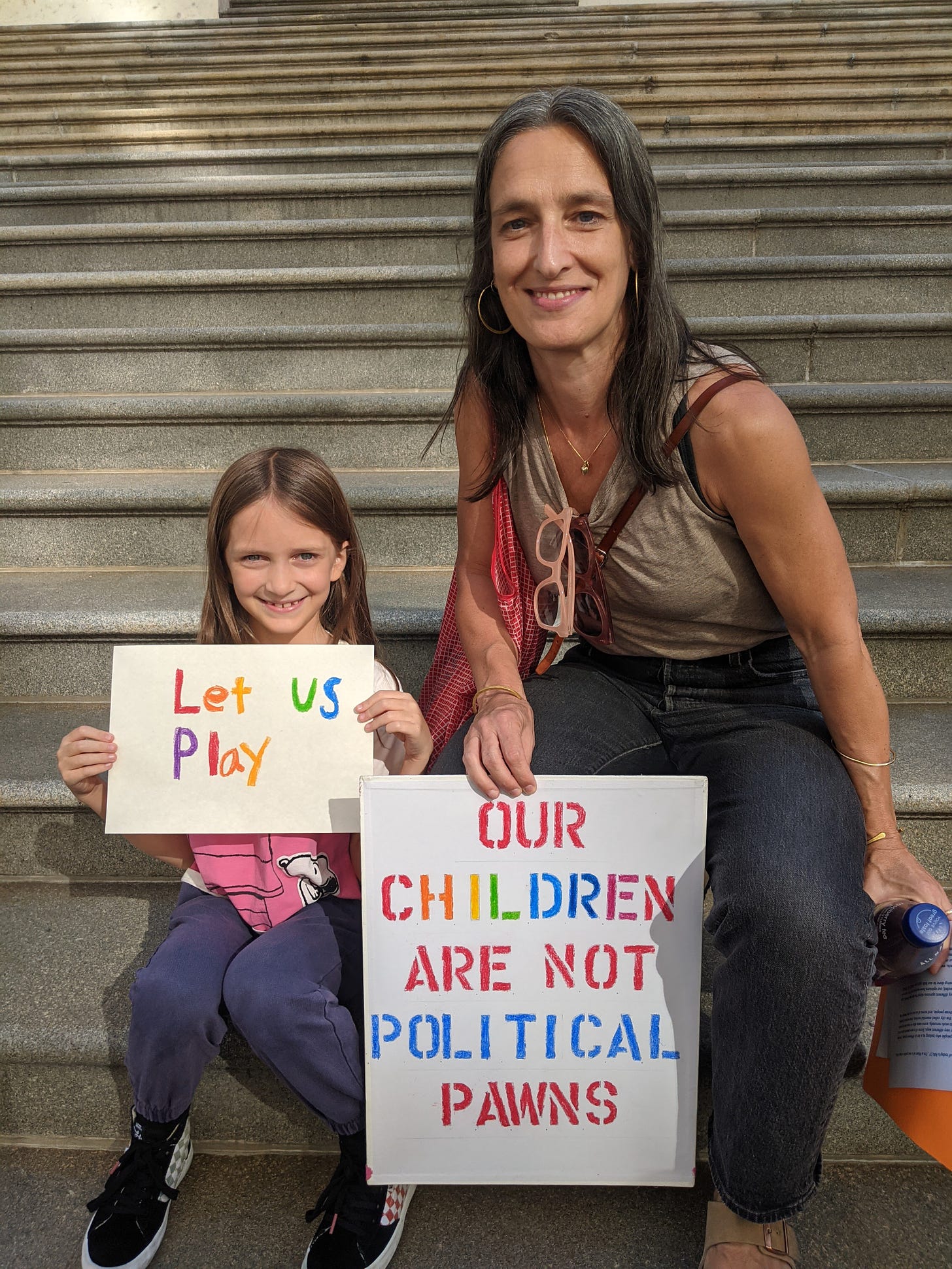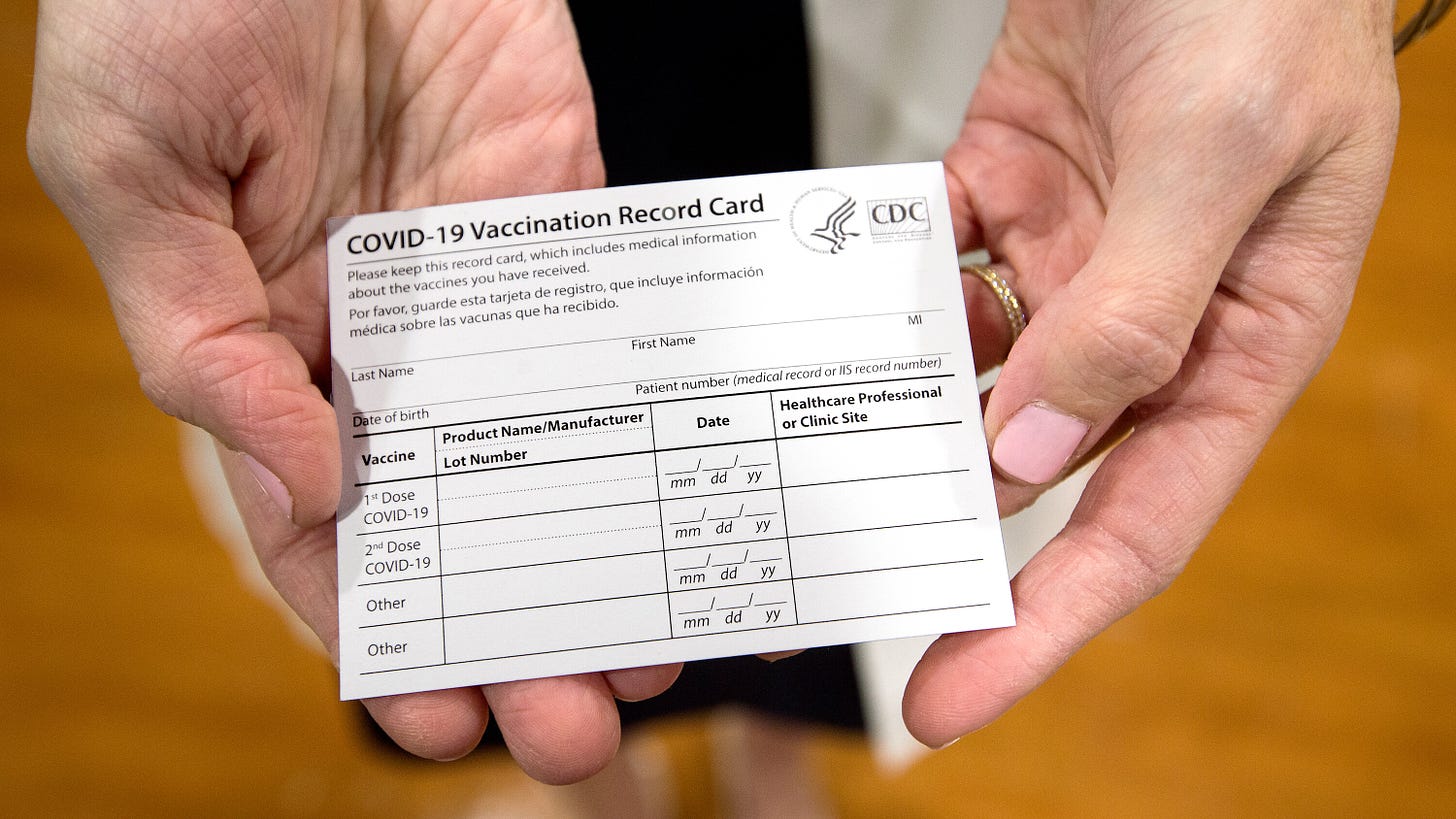I’m Yasmina Palumbo, I frequently tweet from the Restore Childhood handle and am excited to be contributing to this Substack. You can also find me at my NYC Parent on Twitter — handle chosen in reaction to Covid restrictions in New York City when I joined Twitter in August of 2021.
Since then, I’ve been keenly scrolling Twitter for fellow “free thinkers,” by which I mean those less interested in political affiliation than a seeking out of truth, and evidence to back policies that deeply affect our children, and America in general.
One such fellow “free thinker” is author and journalist David Zweig.
Last Wednesday, Zweig tweeted the surprisingly low covid vaccination rates of American children, as reported by the CDC: Only 6% of children ages 2–4 yrs, and 4.5% under age 2 yrs, have completed their primary series of covid vaccines.
He surmised, no matter where you stand on child covid vaccines, these numbers can only be viewed as a “colossal failure” by public health and those advocating for universal vaccination.
I agree.
But what I found most intriguing about the numbers presented by the CDC, was not the low covid vaccination rates, but the dramatic increase in rates for children ages 5-11 yrs. While still an unimpressive 32.8%, the increase from younger cohorts is remarkable.
So why did the vaccination rate jump over fivefold from age 4 to 5 yrs? Were parents more than five times more concerned about their 5 year olds than their 4 year olds? Of course not.
One of the key differences for the 5-11 yrs cohort is that the FDA approved Emergency Use Authorization (EUA) status of the Pfizer vaccine for this group in late October 2021, more than 7 months before approval would be given for children 4 yrs and younger.
It might be tempting to put it all down to availability and, while partly true, the story is more complicated.
Here in New York City, the EUA approval, and resultant CDC recommendation, paved the way to swiftly include children as young as 5 in the city’s strict vaccine passport program, previously only applicable to children 12 and older.
Beginning December 27, 2021, children 5 and older were suddenly mandated to show proof of at least one covid vaccination in order to enter cafes, museums, movie theaters and even zoos. Unvaccinated children were also barred from after school programs, sports, camps, dance, and anything else approaching healthy physical activity necessary to a happy childhood.
It was an immense pressure to put on parents. Compounding this pressure was the fact that venues had only recently re-opened. All New Yorkers had been denied simple pleasures for months on end. The emotional roller coaster of denying access, once again, seemed especially cruel to children, who had already sacrificed so much in the way of their education and milestones.
In some ways, my family’s covid experience was fortuitous. Unlike most Americans who had to face the difficult decision of whether to vaccinate with a great deal of uncertainty, we had already had covid and were confidently reassured by a growing body of evidence that our acquired immunity would protect us from the worst outcomes. For us, it made sense to say no thanks to the experimental vaccines. We made our decision freely before mandates were imposed and, despite the hardship that ensued, we felt obligated to keep to our decision on principle.
But how did other parents make their decisions? What information were these decisions based on? And what percentage of this 32.8% made their decision free of any coercion?
Again, in New York City it’s hard to say. Only weeks after the Pfizer vaccines became available to 5-11 yr olds, Omicron began its sweep through our city.
Anecdotally, and to the dismay of many of my 8 yr old daughter’s classmates’ families, her school had a covid outbreak at the end of November 2021 amongst very recently vaccinated students returning from Thanksgiving break. There was genuine shock on the part of these parents. Obviously. They had been led to believe that vaccination would prevent infection and transmission, and many had voluntarily rushed to follow CDC guidance in the best interest of their child’s health.
But what if Omicron had swept through a month or two before EUA approval? Would parents have listened to CDC guidance and would the 5-11 yr old vaccination rate have reached 32.8%?
The 6% vaccination rate of children aged 2-4 yrs suggests it would not have. Not only were covid vaccines for the most part never mandated for this age group, but their EUA approval came in June of 2022, long after most children had inevitably and uneventfully been exposed to covid. And long after the fear mongering of increased covid hospitalization rates of children had been exposed for what it was, a campaign to increase vaccination rates, as NYS Health Commissioner Bassett quietly admitted. What this low 6% vaccination rate likely reflects is uncoerced decision making by parents informed by life experience rather than the CDC.
As trust in public health continues to plummet, the CDC would do well to focus on covid vaccination rates in an attempt to understand in earnest what they mean, not how to manipulate them. Lower rates may seem like a public health failure, but it might be those in the higher vaccination rates who bear a greater grudge toward the vital role of public health.
Yasmina Palumbo, a mother of two public school children and small business owner in Manhattan, is an advocate for pandemic response accountability.









Welcome Yasmina!
At my FQHC, we by default (internal policy) offer COVID vaccination to everyone over 6 months old. I worry that the longer we do this, the more we will erode our credibility in the community, much like the CDC has done.
Appreciate this perspective!